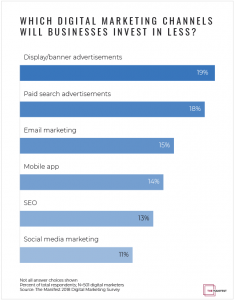 By Vanessa DiMauro, Published October 26, 2014
By Vanessa DiMauro, Published October 26, 2014
Your content is well-written and well-produced, engaging, even useful. But is your audience really paying attention? We all know what it’s like when someone won’t stop talking — it’s very hard to stay engaged. Have you tried listening to your audience instead?
Online communities are primordial (pre-web, even) discussion, content-sharing, and collaboration applications. While many brands use online communities for bottom-line-focused activities such as lead generation, others focus on listening, which helps them uncover powerful sources of customer insights, content, and industry credibility — all of which can support their marketing strategy.
First, let’s understand what is meant by online communities. Online communities are dedicated, brand-sponsored platforms that enable the exchange of ideas and content via a suite of interactive features, such as discussion forums, polls, content libraries, and member directories. These communities generally fall into one of the following four categories:
- Lead generators: These communities are established by brands to bring members into conversations solely to generate sales leads. When a prospect joins the discussion, the sales team jumps in to press the sale. It’s a Trojan horse, inspiring neither trust nor engagement.
- Marketing speakers: Long on broadcasting messages to members, short on interaction, the primary mission of “megaphone” communities is to share the brand’s new developments and latest accomplishments with prospective and current customers. Often designed and managed to optimize SEO measures, they also typically fall short on member engagement.
- Customer huggers: Staffed by customer service employees assisting members in need, “closed tickets” is the key metric here. But in the absence of additional in-depth interactions and collaboration with members, valuable insights remain undiscovered. The community is just a “nice-to-have” cost center, rather than an outreach mechanism.
- Innovation centers: Dedicated to achieving deep collaboration with customers and partners, these communities seek to share information, glean insights, and put community-sourced ideas into action. Through continuous engagement around the ideas, concerns, and hopes the membership has for the products and services, these communities identify areas of internal improvement and growth and provide ongoing feedback to members about their contributions. Innovation centers can have a profound impact at all levels of the organization.
Successful online communities often combine aspects of each of these four styles: identifying future customer needs (lead generation), sharing marketing information (marketing speakers), reducing problems and increasing customer intimacy (customer hugs), and collaborating on innovation opportunities for both members and the organization (innovation centers). Yet true listening communities — those that offer brands the greatest potential to source content — emphasize the latter two styles (customer huggers and innovation centers).
Companies like HP, Whole Foods, and Mindjet use brand-owned online communities to connect more deeply with customers, prospects, suppliers, and partners. And they do so by listening much more than they talk.
Sourcing content through listening to an online community can take many forms:
- Thought leadership from highly engaged member experts: One example is the award-winning LexisNexis Investigators Network (LNIN). Here members (all law enforcement professionals) share best practices across local, state, and national law enforcement agencies within a secure online community.
Another is the Palladium Group XPC Community. Based on the balanced scorecard management system developed by Kaplan and Norton, this community of management consultants, strategy professionals, and operations executives pools expertise to develop best practices for use within the organizations.
A third example is HP’s IT Expert Zone, where corporate IT staff can interact directly with HP’s IT experts, asking complex questions and receiving detailed responses. By listening to this content, IT managers and directors can better understand the pitfalls and opportunities within their IT environment.
- Process improvement and operational efficiency case studies: SPS Commerce, a supply chain solutions provider, created a public community for customers to collaborate on solving all manner of supply change management issues. Thomson-Reuters operates a global online community (intranet) for employees to improve collaboration and speed up innovation across offices in over 100 countries.
- Case studies from member stories about products, services, or solutions: These are especially helpful for B2C or B2B firms where it may not be easy to identify engaged end users. For example, Hitachi Data Systems (HDS) maintains close relationships with its large corporate customers, but may not know the specific details of an end user’s implementation. The HDS Innovation Center Community provides a forum for end-user innovators within large organizations to share their forward-thinking approaches, and offers a way to develop case study content HDS might never learn about otherwise.
- Problem-solving testimonials through collaboration with customers: Analog Devices’ (ADI) EngineerZone online community was cited by 76 percent of customers as a reason to purchase from ADI in a 2012 customer survey.
- Customer-generated endorsements and recommendations: Wireless networking firm Aerohive leveraged positive user-created content to build brand equity and customer acquisition. Mindjet’s collaboration tools saw a 5 percent increase in referral traffic after opening its online community.
Marketers considering a listening approach must beware of the impulse to focus too much on quantity metrics (e.g., number of conversations, articles, or members). A community with a seemingly high number of likes, for example, may not generate the kind of thoughtful exchanges that support a brand’s content marketing strategy. Instead, examine whether your community provides deeper insights, such as a case study worth sharing, an insight worth pursuing in a long-format report, or an idea around which to build a new product.
5 tips for building a successful listening community
Online communities are social entities. Even the most focused and defined membership will display a remarkable range of behaviors and contribution styles. Community managers should foster a diversity of opinions and avoid closing down fruitful, if sometimes intense, discussions. Attentive listening by community managers — signaling they are actively observing your community’s conversations — will confirm to members that your organization is paying attention to what they are saying.
Caveat: Don’t stifle disagreements, disputes, or complaints. Online communities are an early warning system for product and service issues — and, sometimes, the next big thing that could transform your firm. Redirect or resolve problematic discussions through engagement rather than censorship.
Tip 2: Encourage conversations through engagement
Community members can supply clues — and contributors — for great user stories, case studies, and thought leadership. Encourage in-depth discussions, especially among subject matter experts, and highlight their contributions. Internal communities can be a rich source of insights and ideas for improving operational efficiency, product/service enhancements, and innovations — if members have an incentive to contribute. Be sure to ask good questions, solicit feedback, and invite others into the conversation.
Caveat: Sustaining the flow of ideas and insights from the community is a marathon, not a sprint. A long-term marketing strategy for member engagement should attract new members and reward long-time contributors.
Tip 3: Empower members
Reward active participants with opportunities to guide discussions and share their expertise. When a community attracts or develops its own subject matter experts from within the membership, their contributions add to their own reputation and to the unique value of your branded community.
Celebrate this homegrown thought leadership by rewarding those star contributors with offline and online appreciation.
Caveat: Empowering members may mean respecting their privacy and sheltering their discussions from public view — especially for executives, established experts, and others with confidentiality concerns. Creating private peer-to-peer networks can encourage more candid conversations.
Tip 4: Respect and reward contributions
While the terms and conditions governing your online community contributions may allow you to use your members’ contributions however you wish, common sense and courtesy dictate that you request permission before doing so. Acknowledgement and an honorarium for the most valuable contributions are usually all that’s needed.
Caveat: Don’t overtip. Your community members will be highly attuned and aware of the most valuable individual contributors and contributions. Make sure the rewards match the community’s sense of value, not just your organization’s agenda.
Tip 5: Build trust
Online communities quickly develop a keen sensitivity to what is authentic and what is not. Organizations that remain authentic, maintaining trust with their online community members, will see that reflected in external perceptions of the firm across all its activities. Building and maintaining trust is an essential component of a successful online community.
Caveat: Authenticity takes work, strong governance, constant attention and vigilance. Internal teams working with community members need clear guidance on handling issues where evasion or inauthenticity may appear to be the best option. Keep it real.
Business Articles | Business 2 Community
(311)
Report Post








